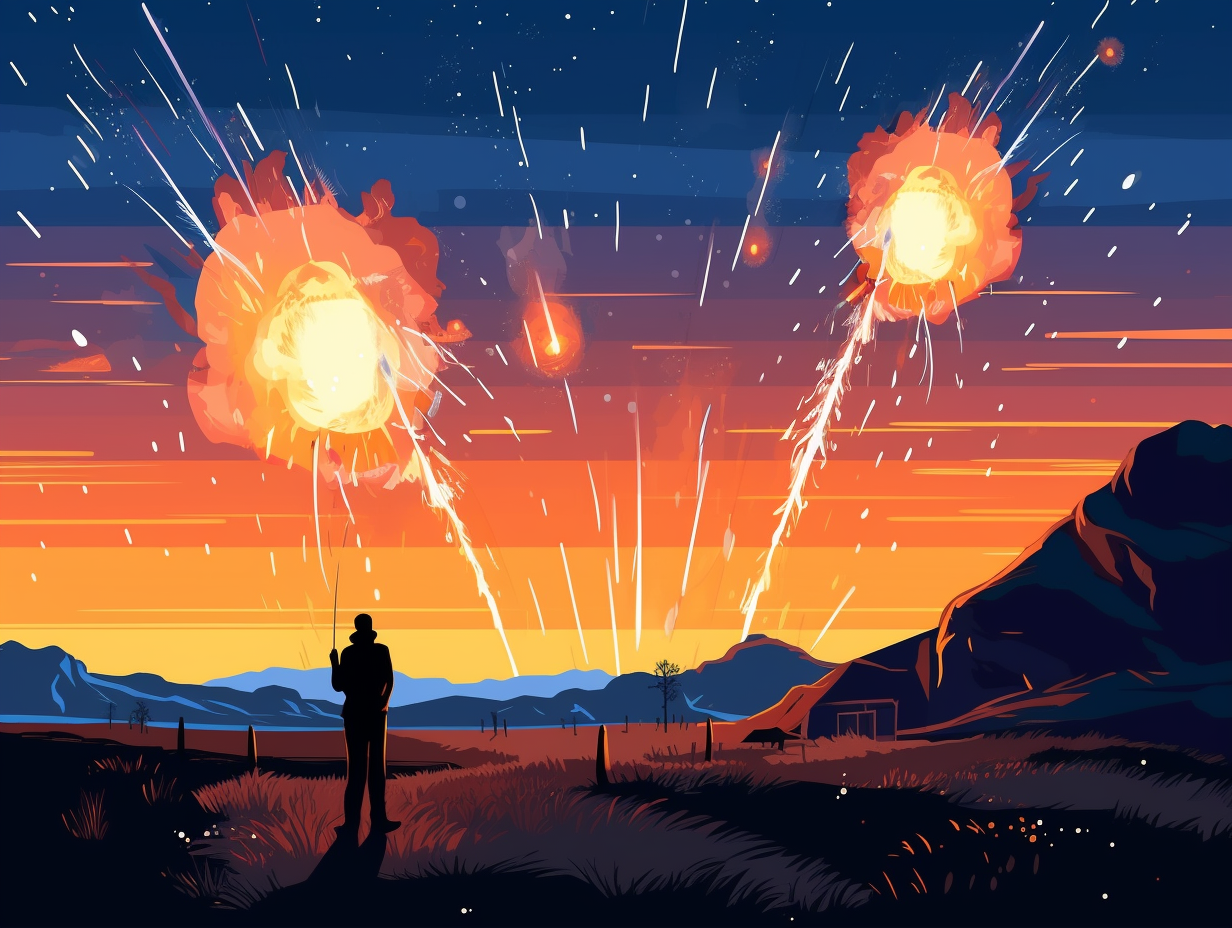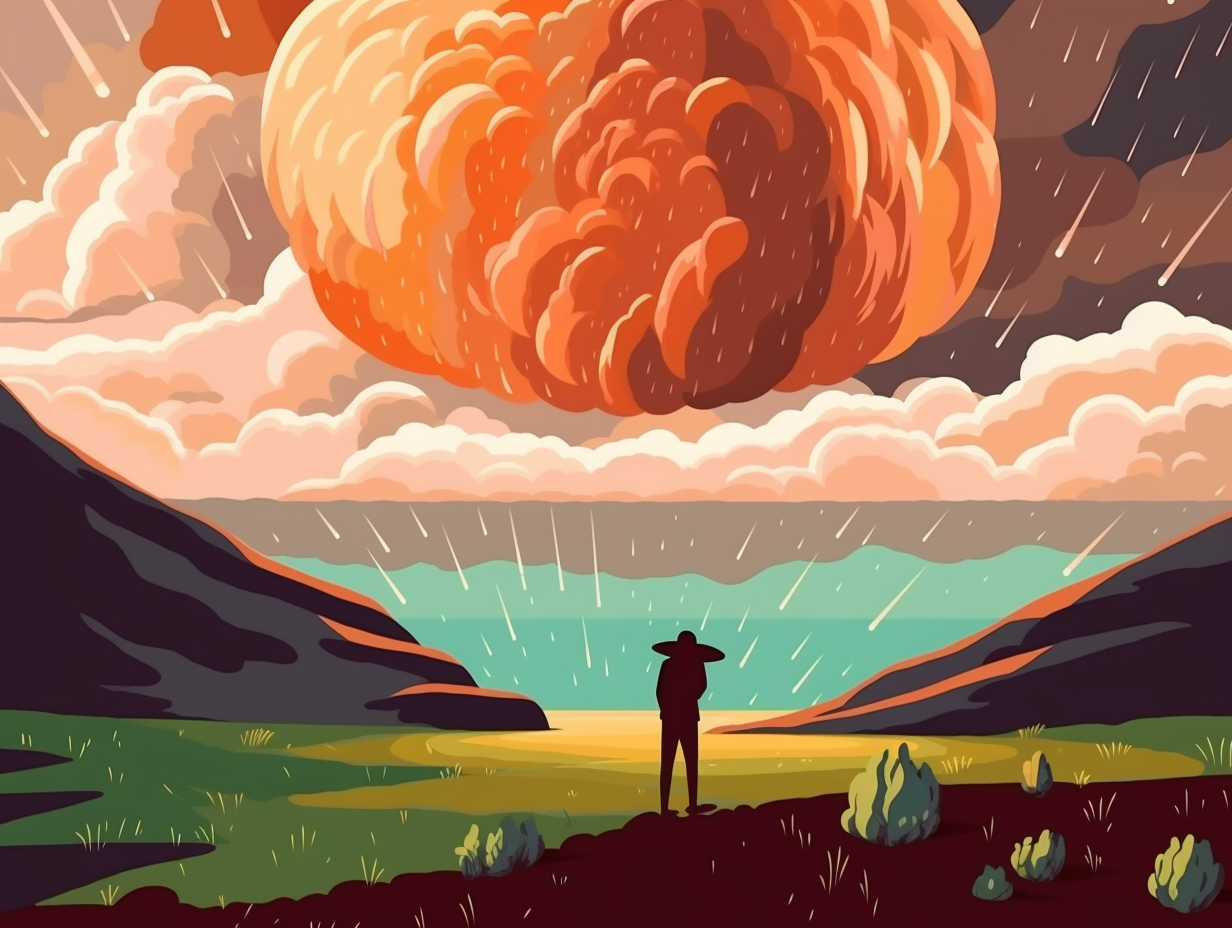13 Stellar Fun Facts: Uncover the Explosive Secrets of Supernovas!

1. Supernovas: Most Explosive Act of the Universe
If supernovas were rock stars, they'd definitely be considered the Most Explosive Act of the Universe: In just a few seconds, these celestial firecrackers release a staggering amount of energy equivalent to the Sun's energy output over its entire 10-billion-year lifetime, all thanks to their dramatic core-collapsing performances that send shockwaves and stellar debris hurtling through space.
Source => chegg.com
2. Stellar Alchemists Creating Earthly Bling
Who knew that supernovas were the original alchemists, toiling away deep in the cosmos, secretly transforming stardust into bling for our fingers and wrists: these astronomical explosions are responsible for creating elements heavier than iron, including crowd favorites like gold, platinum, and uranium, making them not only epic light shows in the sky, but also the celestial source of our earthly treasures.
Source => bigthink.com

Did you know stars change colors as they heat up and cool down, with red stars being cooler and blue stars being the hottest? Discover their unique life-cycles and how they strut their cosmic style on the color wheel!
=> Fun Facts about Stars
3. Thank a Supernova for Your Cast Iron Pan
Hold on to your skillet and thank a supernova the next time you scramble some eggs: The majority of Earth's iron - the crucial ingredient for cast iron pans and our planet's core - comes from type Ia supernovas, explosions of white dwarfs that scatter heavy elements like iron throughout space and eventually end up in planets like ours.
Source => newscientist.com
4. Supernovas Craft Our Very Essence
Feeling a little spaced out? You've got supernovas to thank for that! These cosmic daredevils bring the house down, quite literally, while crafting our very essence: a supernova's immense energy release produces shockwaves, causing the formation of new atomic nuclei, including those heavier than iron, which eventually construct our bodies and the world around us.
Source => energy.gov

5. White Dwarfs: Cosmic Bank Robbers
Did you hear about the white dwarf that robbed a cosmic bank for some heavy-duty goods? It exploded its way through, accumulating all that matter for a life-and-death grand finale: Enter the elusive Type Iax supernova, like Sgr A East in our Milky Way, that spectacularly detonates a white dwarf and crafts the essential elements for life, including nickel, chromium, and iron, while also helping astronomers refine their understanding of these rare celestial capers.
Source => universetoday.com
6. Marine Bacteria Snacking on Stardust
Earth's ancient, mysterious marine bacteria had a cosmic craving for stardust in their diets: A Type II supernova occurred about 2.2 million years ago, showering Earth with iron-60 isotopes, which magnetotactic bacteria gobbled up, leaving traces of this radioactive stardust in nanocrystals on the ocean floor, reminding us how we're all connected to the explosive deaths of massive stars.
Source => phys.org
7. Supernovas: Cosmic Chefs of the Universe
Have you ever gazed at the night sky and pondered who the magnificent cosmic chef is that tossed elements like olives into the universe's salad bowl? Look no further, because supernovas are the kitchen whizzes of the cosmos: These explosive celestial phenomena create the heavy elements we need, such as rare isotopes like plutonium, which play vital roles in spacecraft batteries and life-saving pacemakers.
Source => climate-policy-watcher.org
8. Blast from the Past: SN SCP16C03
Blast from the past, courtesy of a cosmic superstar: The snazziest supernova named SN SCP16C03 was spotted strutting its stuff at a redshift of 2.22, making it the highest redshift Type Ia supernova ever discovered. Peeping from behind the galaxy cluster MOO J1014+0038, this fabulous fireball got caught in the Hubble Space Telescope's lenses and was confirmed as a Type Ia supernova. With an impressive amplification of 2.8, this show-stopping explosion has major implications for our understanding of star and galaxy evolution.
Source => phys.org
9. Daily Cosmic Explosions Party
It seems that the universe likes to "party like it's 1999" almost every day, painting the cosmic canvas with glittery explosions: In the Milky Way alone, supernova explosions may occur once every 50 years, meaning that across the entire universe, there could be several thousand brilliant, starry spectacles taking place daily.
Source => space.com

10. Mini-Supernova Shock Waves on Earth
Strap in, folks, we're hitting cosmic warp speed: Scientists have been using powerful lasers to recreate mini-supernova shock waves right here on Earth, giving us new insight into how nature's very own Energizer Bunnies - the supernova shocks - accelerate particles to unimaginable speeds. The secret sauce? It's all about the small-scale turbulence that catapults electrons to relativistic velocities! So buckle up, because these high-octane findings are set to make the already mind-blowing world of supernovas even more electrifying!
Source => energy.gov
11. Neutrinos: Cosmic Marco Polo Players
In a cosmic game of "Marco Polo," neutrinos are the elusive swimmers sneaking away from the poolside explosion, just waiting to be caught by Earth's particle detectors: It turns out that a supernova, or stellar explosion, releases most of its energy as neutrinos, which can escape the star hours before light particles do. The first official game of cosmic "Marco Polo" took place in 1987 when three detectors around the world discovered neutrinos from a supernova called SN 1987A, opening up an astronomical playground for scientists studying these sneaky particles and uncovering clues about the stars' explosive fate.
Source => news.fnal.gov
12. Pulsars: Time-Traveling Clock Glitchers
Ever wish you could "glitch" the clock to give yourself a bit more time? Pulsars understand your dreams: These cosmic remnants from exploded stars occasionally experience timing hiccups due to their outer shell playing with their inner superfluid, which has zero viscosity and stores momentum, generating the extra oomph to speed up the pulsar. Talk about a time cheat! Bonus: This phenomenon also offers scientists a handy alternative to gravity-based methods for measuring the pulsar's mass.
Source => space.com
13. Supernovae: Divine Construction Crew
Remember that old saying about the streets of heaven being paved with gold? Turns out their construction crew was actually a team of celestial demolition experts called supernovae: These exploding stars are responsible for creating and scattering heavy elements like gold, silver, and uranium throughout the universe, eventually landing on planets, such as our very own Earth.
Source => space.com
Related Fun Facts




















